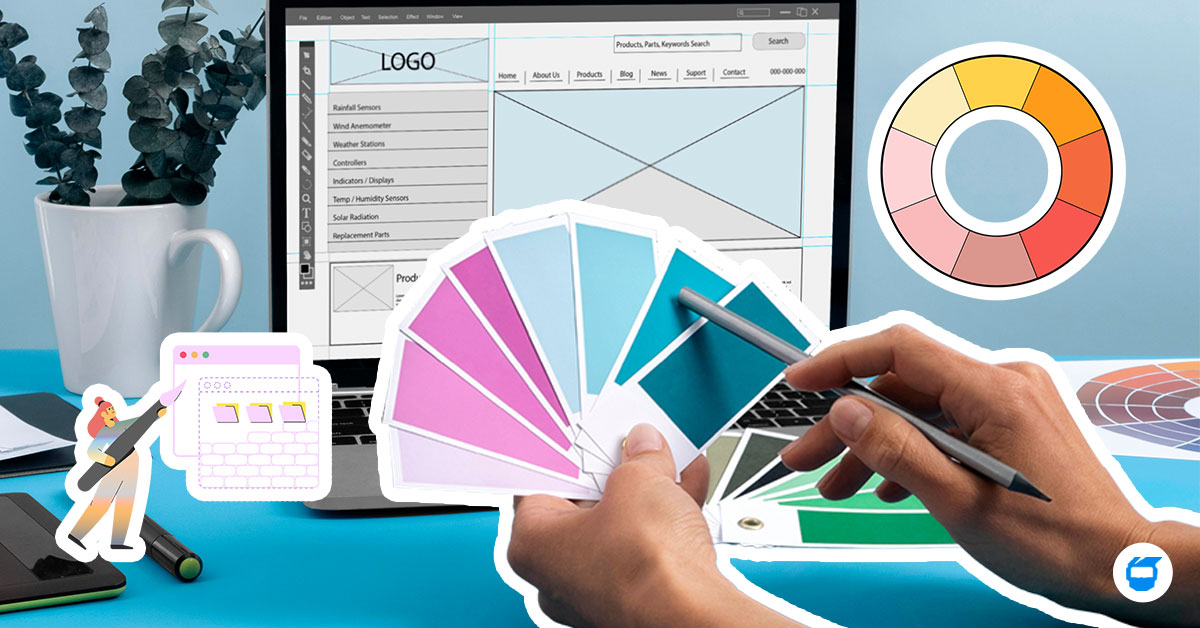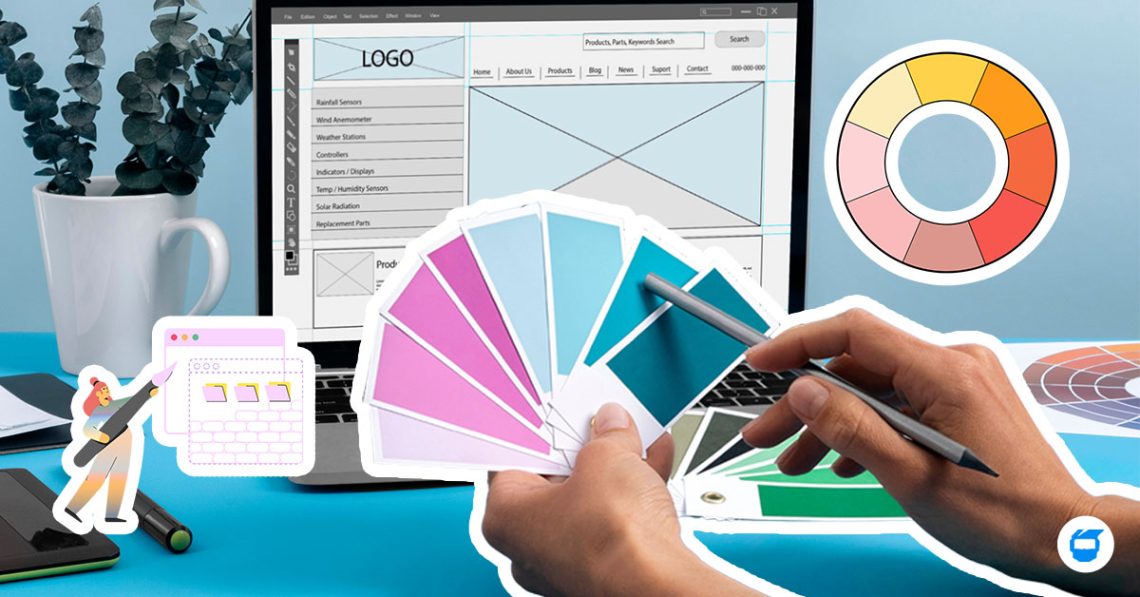
Color Accessibility in Web Design: Choosing Palettes that Work for All Users
Creating an inclusive website is essential in today’s diverse online world. One of the most critical aspects of inclusive design is ensuring color accessibility. This guide will help you understand the importance of color accessibility in web design and how to choose palettes that work for all users.

Table of Contents
- Why Color Accessibility Matters
- Key Reasons to Prioritize Color Accessibility
- Types of Color Blindness
- Principles of Color Accessibility in Web Design
- How to Choose Accessible Color Palettes
- Practical Tips for Implementing Color Accessibility
- Tools and Resources for Color Accessibility
Why Color Accessibility Matters
Color accessibility ensures that all users, including those with visual impairments or color vision deficiencies, can perceive and interact with web content effectively. It’s not just about compliance with regulations like the Americans with Disabilities Act (ADA) or the Web Content Accessibility Guidelines (WCAG); it’s about creating a user-friendly and welcoming experience for everyone.
Related: The Importance of Accessibility Standards Compliance in Web Design
Key Reasons to Prioritize Color Accessibility
- Inclusivity: Designing for color accessibility means considering the needs of all users, including those with color blindness or low vision.
- Usability: Accessible color choices improve overall usability, making it easier for everyone to navigate and interact with your site.
- SEO Benefits: Search engines favor accessible websites, which can improve your site’s ranking.
- Legal Compliance: Adhering to accessibility standards helps avoid potential legal issues.
Types of Color Blindness
Before diving into how to choose accessible palettes, it’s essential to understand the different types of color vision deficiencies.
- Deuteranopia (Red-Green Color Blindness): Difficulty distinguishing between red and green.
- Protanopia (Red-Green Color Blindness): Similar to deuteranopia but affects red more severely.
- Tritanopia (Blue-Yellow Color Blindness): Difficulty distinguishing between blue and yellow.
- Achromatopsia: Complete absence of color vision, seeing only shades of gray.
Understanding these conditions helps in selecting colors that work well for all users.
Principles of Color Accessibility in Web Design
Designing with color accessibility in mind involves more than just picking the right shades. Here are some key principles to follow:
1. Contrast is Key
See to it that there is sufficient contrast between text and background colors. High contrast improves readability for users with low vision or color blindness. WCAG recommends a minimum contrast ratio of 4.5:1 for normal text and 3:1 for large text.
2. Use Color and Texture
Relying solely on color to convey information can be problematic. Use textures, patterns, and labels alongside colors to differentiate elements. This allows users who cannot perceive certain colors to understand the information.
3. Test with Tools
There are numerous tools available to test color accessibility. Tools like the Colour Contrast Analyser, WebAIM’s Contrast Checker, and the Chrome Accessibility Developer Tools can help you evaluate your design’s color contrast and accessibility.
How to Choose Accessible Color Palettes
Now that we understand the importance and principles of color accessibility, let’s look at how to choose accessible color palettes.
1. Start with a Neutral Base
Using a neutral color base, such as shades of gray, provides a solid foundation. Neutrals can serve as background colors, allowing other colors to stand out without overwhelming the user.
2. Add Accent Colors Mindfully
When adding accent colors, choose ones that contrast well with your neutral base and each other. Make sure these colors stand out and are distinguishable by all users, including those with color vision deficiencies.
3. Test Your Palette
Use tools and simulations to test how your palette appears to users with different types of color blindness. Adjust colors as needed to ensure all elements are distinguishable.
Practical Tips for Implementing Color Accessibility
Here are some practical tips to ensure your web design is color accessible:
1. Use Accessible Color Combinations
Some color combinations are naturally more accessible than others. Here are a few tips:
- Avoid Red/Green Combinations: These are problematic for most types of color blindness.
- Choose High-Contrast Pairs: Black text on a white background is a classic example of a high-contrast combination.
- Consider Blue/Orange or Purple/Yellow: These pairs generally work well together.
2. Provide Alternative Cues
Don’t rely solely on color to convey information. Use text labels, icons, and patterns to provide alternative ways to differentiate elements.
3. Use ARIA Labels and Descriptions
The Accessible Rich Internet Applications (ARIA) specification provides ways to enhance accessibility. Use ARIA labels and descriptions to ensure that all interactive elements are accessible to screen readers.
4. Consistent Design Patterns
Consistency helps users understand and navigate your site more easily. Use consistent color schemes and patterns throughout your design to provide a predictable and comfortable user experience.
Tools and Resources for Color Accessibility
Here are some tools and resources to help you create color-accessible web designs:
Color Contrast Checkers
- WebAIM Contrast Checker: A simple tool to check color contrast ratios.
- Colour Contrast Analyser: A downloadable tool that checks contrast against WCAG guidelines.
Simulators
- Color Oracle: A color blindness simulator that shows how your design looks to users with different types of color blindness.
- Coblis – Color Blindness Simulator: An online tool to visualize how your site appears to users with color vision deficiencies.
Accessibility Guidelines
- WCAG (Web Content Accessibility Guidelines): The primary resource for understanding and implementing web accessibility standards.
- W3C’s Web Accessibility Initiative: Offers guidelines, tools, and resources for web accessibility.
Designing with everyone in mind is not just a best practice; it’s a responsibility. Let’s make the web a more inclusive place, one accessible color palette at a time.
Looking to hire a professional web designer for your business? Contact us today, and we’ll be glad to assist you!

